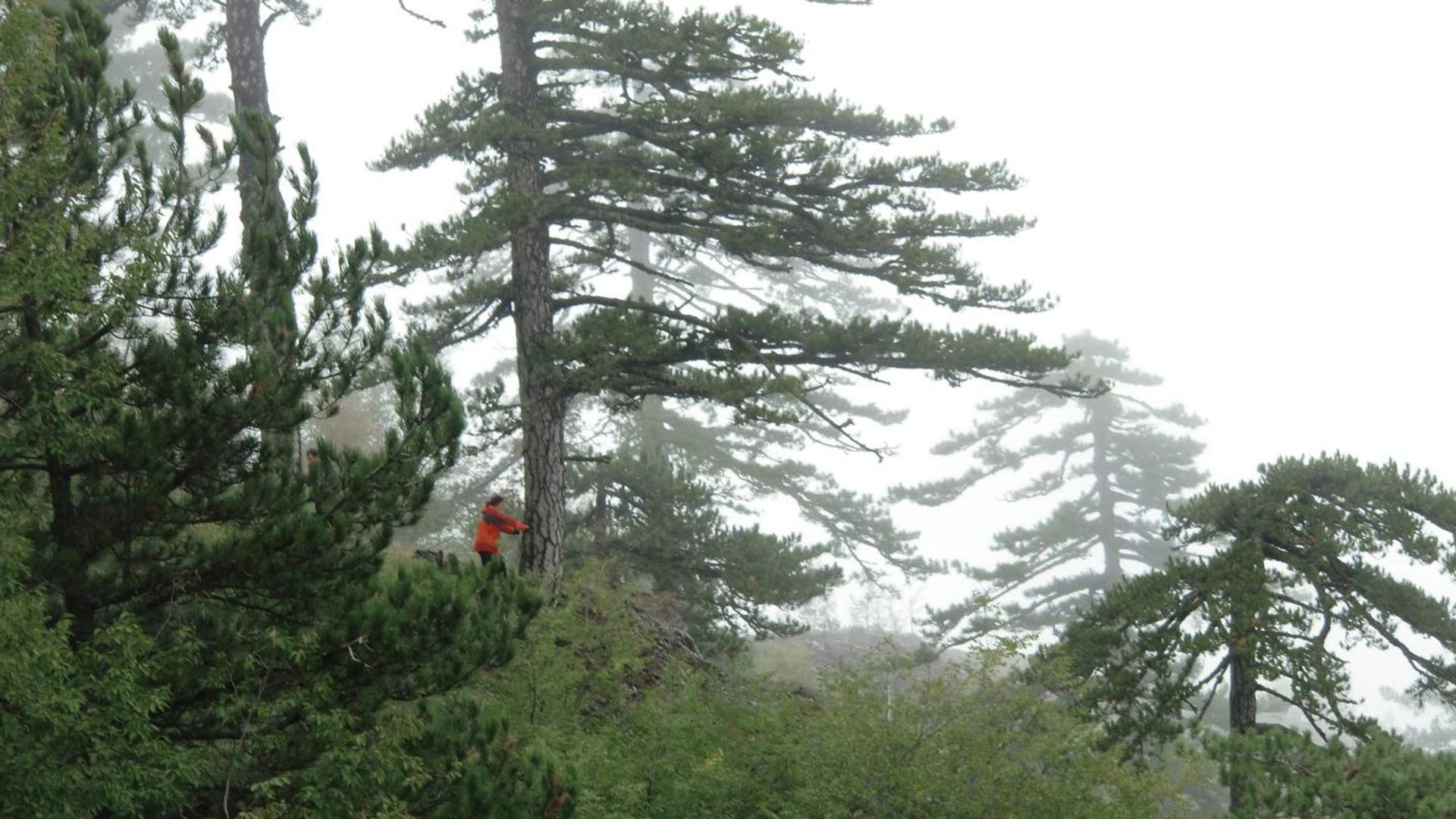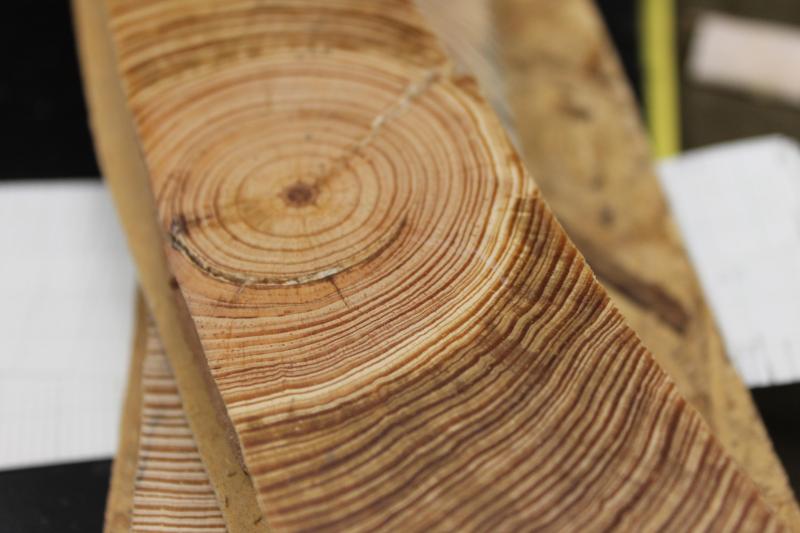Reading The Climate In Tree Rings
"More extreme positions create more extreme climate events, especially heat waves and storms [in Europe]."
"[And the tree rings show] big fires happen in the Balkans when the jet is in its southerly position."
"The recent rise in variance is unprecedented in 300 years."
"Volcanic eruptions are the best proxy of geoengineering."
"We see a trend, atmospherically speaking, that the tropical region is moving further north in the Northern Hemisphere."
"Wide tree rings represent wet years and narrower rings indicate dry years. The research shows from 1203 to 2003, the northern part of the tropics shifted up to 4 degrees."
"We can determine how the edge of the tropics has moved over the last 800 years."
Dr. Valerie Trouer, dendrochronologist, University of Arizona
"The instrumental period provides a snapshot [of past climate]. But the tree rings are a panorama."
"We keep breaking records year after year. It's a little worrisome to see the most extreme years right near the present."
David Meko, researcher, Laboratory of Tree-Ring Research, University of Arizona
 |
| University of Arizona tree-ring
scientist Valerie Trouet taking a pencil-thin core from an old Bosnian
pine growing on Mount Olympus in Greece. Greg King Copyright 2010
|
The North Atlantic Jet Stream known to drive weather extremes over Europe, presented a steady course for the past two hundred years, then abruptly became less predictable and scientists relied on specialized instrumentation-derived data to forecast for comparison purposes of the jet stream's movements. A technological aid scientists find useful, but dating only to the 19th Century when such instruments and scientific note-taking commenced.
For data reflecting a much earlier era scientists turned instead to parsing tree rings as a more reliable method of discovering complete historical snapshots of climate variations. Trees form new rings as they age, the rings forming outward from the core, with each year forming a new circle of dead wood around the trunk of trees. Every ring reflects a particular year's growth information relating to precipitation, temperature and other climate data to be studied.
A research team out of the University of Arizona, led by dendrochronologist Valerie Trouer, sampled 400 trees located from the Balkans and 200 in Scotland. Between these two regions is where the jet stream flows, and trees can reveal the temperature range in their rings, along with the frequency of fires that take place over time, to reveal an expansive chronological accounting of jet stream behaviour.
A more variable jet stream presenting in recent decades leaves the impression that the shift and its fallout represents human effects on climate, according to Dr. Trouet. As organic recording devices, ancient trees contain information about past climate, civilization, ecosystems and as bizarre as it seems, galactic events.
But there is rationality in that last noted element of research and it was an astronomer, A.E. Douglass, who in the 1930s founded the Laboratory of Tree-Ring Research. Dr. Douglass anticipated that tree rings might reveal the connection between sunspots and climate. The first such laboratory to be dedicated to the research of tree rings, it has now been joined by roughly a dozen laboratories established globally which gather data from four thousand sites established on all continents, with the exception of Antarctica.
The International Tree-Ring Data Bank operates a library accessible to all scientists. Tree ring research has three categories; dendroclimatology which is the analysis of tree rings to draw out past climate data; dendroarchaeology which represents the study of tree rings to determine how past climate affected human societies; and dendroecology, reconstructing past forest ecosystems.
 |
| A large tree section from the tree ring lab. |
Tree rings reveal whenever huge environmental changes occur and has been recognized in the past six or seven decades that climate change to the degree now seen has few counterpart events in the distant past, according to researchers. Oxygen isotope analysis can draw data on the source of the water a tree absorbed centuries earlier, and can determine as well whether that water was derived from a storm or a hurricane.
Some scientists have advanced a proposal of scattering aluminum sulfate into the atmosphere to block the sun's warming rays and to cool the planet, as a possible solution to climate change. Rings analyzed from trees in five locations worldwide show that following a volcanic eruption in 1568, global climate cooled for two years as a result of the volcanic particulate matter circulating in the atmosphere, blocking out the sun.
During six decades, from1568 until 1634 subtropical expansion led desert climates to make their way north and it has been speculated that, as a result of expanding zones of hot and dry weather, the Ottoman Empire began its decline, the Ming dynasty collapsed -- interpretation offering the view that climactic events related at least partially to the the historical record of civilizational change.
Because stars emit radiation reacting in the atmosphere with nitrogen to change the levels of carbon 14, taken up by living things, it becomes a tracer for cosmic ray levels seen in past spikes in the cosmic rays attracting interest from scientists in the acknowledgement that communication satellites and other technology can be disrupted and even entirely destroyed.
 |
Labels: Climate Change, Nature, Tree Rings

0 Comments:
Post a Comment
<< Home